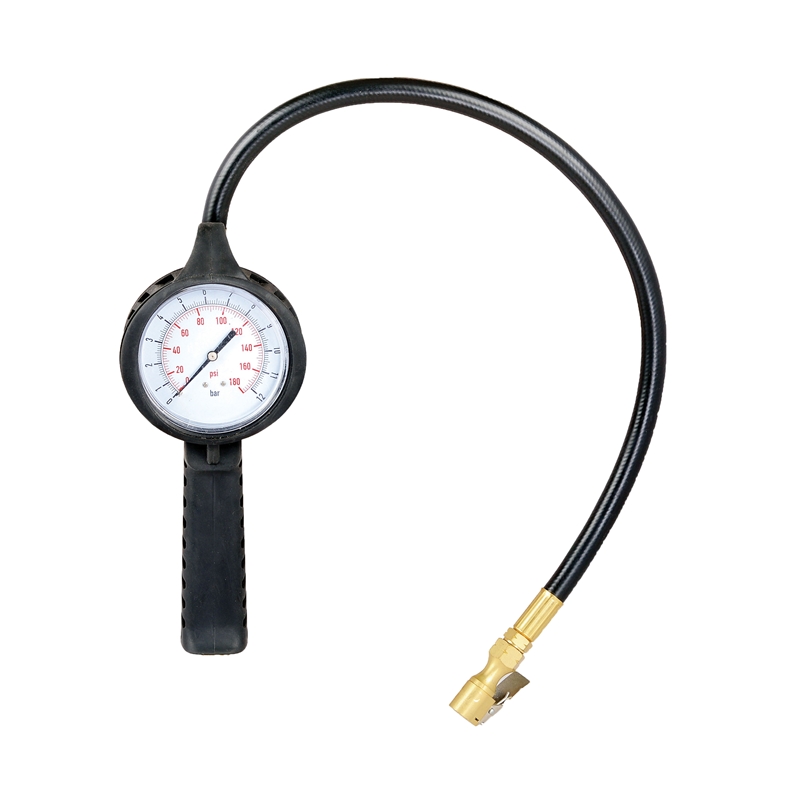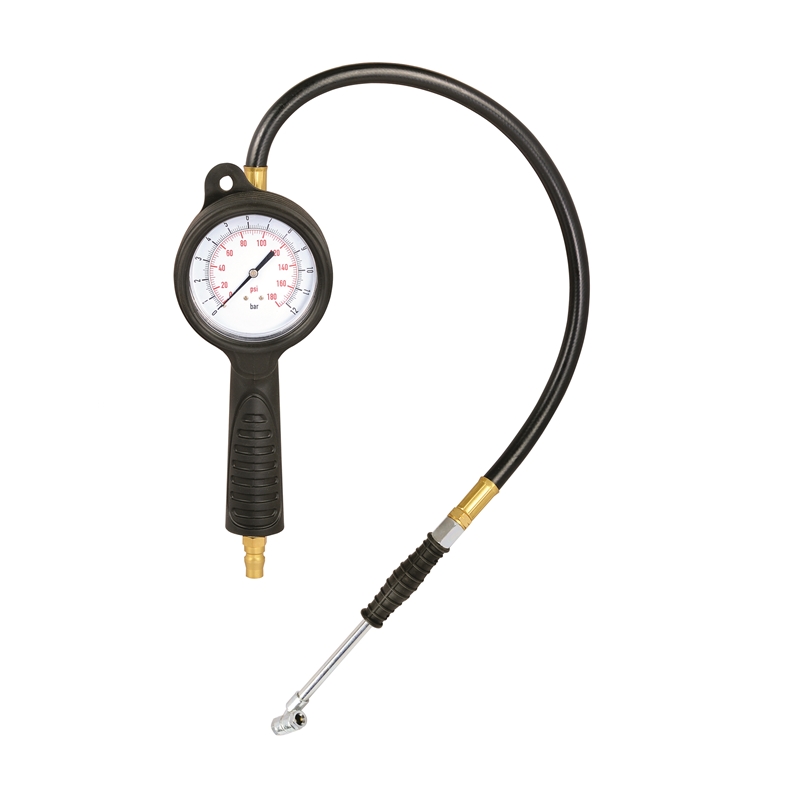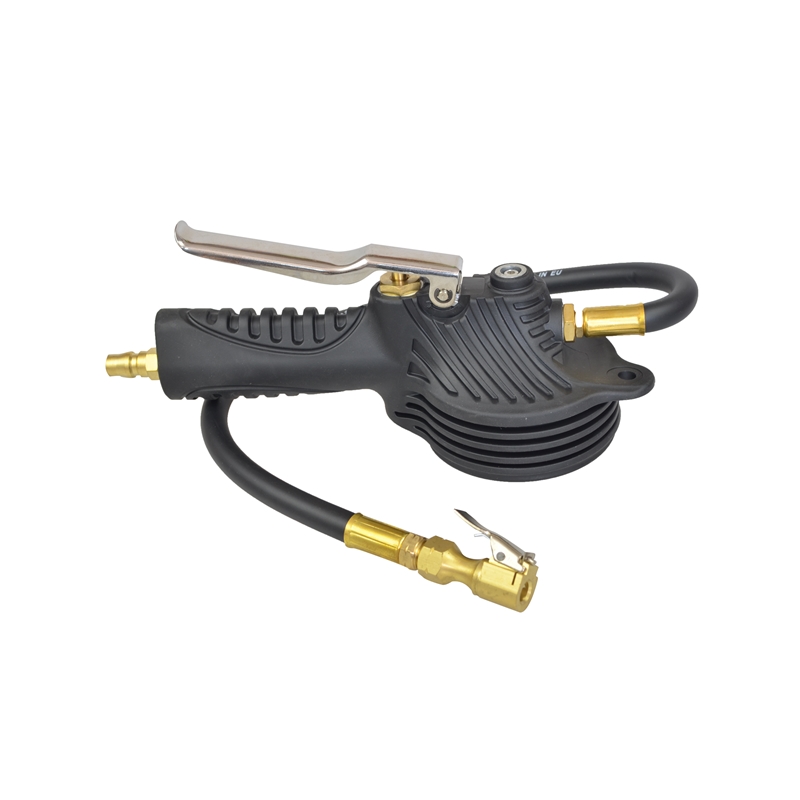| Part Number | 192031 |
| Reader Unit | Analog Gauge |
| Chuck Type | Clip on or dual head chuck |
| Max. Inflation | 174psi / 1,200 kPa / 12 Bar / 12 kgf |
| Scale | psi / kPa / Bar / kgf |
| Inlet Size | 1/4" NPT / BSP female |
| Hose Length | 20"(500mm) |
| Housing | Aluminum die casting with rubber cover |
| Trigger | Stainless steel |
| Accuracy |
+/-2 psi @ 25 - 75psi (exceeds EC Directives 86/217) |
| Dimension(mm) | 300 x 150 x 110 |
| Weight | 1.0 kgs |
| Operation | inflate, deflate, measure |
| Max. Airline Pressure | 200 psi / 1300 kPa / 13 Bar / 14 kgf |
| Deflation Valve | Combi trigger |
| Powered by | No power needed |
Die cast Aluminum alloy body with rubber housing, provides anti-bumping and knocking. NPT or BSP inlet with brass adaptor, longer service life without corrosion.
Durable hybrid hose, made in Europe.
Heavy duty air chuck, dual head available.
Swivel hose connection.
Why Do You Need Tyre Pressure Gauge?
Approximately 11,000 car crashes each year are caused by tyre failure, according to an estimate by the National Highway Traffic Safety Administration. Underinflated tyres are pinpointed as a major cause of failure, while properly inflated tyres can yield a 3.3% increase in fuel economy -- and may just save your life.
Most new vehicles have a tyre pressure monitoring system (TPMS) that warns if a tyre dips under the recommended air pressure. If your car is older, however, you'll need to use a tyre pressure gauge to check if you have the correct tyre pressures. You'll be served well to check them regularly because your tyres are the only part of your car that actually touch the ground.
The Importance of Proper Tyre Pressure
Keeping your car’s tyres properly inflated to the automaker’s recommended pressures is a critical element of tyre maintenance. Tyres that contain the specified amount of air pressure last longer and contribute to vehicle safety.
Dangers and cost impact
Low tyre pressures affect braking distances and provide less responsive steering and handling. This can be especially dangerous when an emergency stop or sudden evasive maneuver is needed to avoid a collision.
In addition, low pressures allow tyre sidewalls to flex excessively, which generates heat. While moderate heat simply accelerates tyre tread wear; high heat can lead to loss of tread segments or even blowouts.
Underinflated tyres also have higher rolling resistance, which reduces fuel economy. And, they wear more rapidly at the outer edges of the tread, which means replacement will be necessary sooner than with properly inflated tyres.
Overinflated tyres are less of an issue. Modern tyres can easily withstand pressures that exceed those recommended for normal driving. However, consistently overinflated tyres provide a less compliant ride and suffer more rapid wear in the center of the tread, which again means replacement will be necessary sooner than with properly inflated tyres.
Determining proper tyre pressures
Refer to your vehicle owner’s manual or the tyre specification decal on the driver-side doorframe. For older model cars (prior to 2003), tyre inflation information may be located inside the glove box door, fuel filler flap, or trunk lid. Do not use the pressure molded into the tyre sidewall. This indicates the pressure needed to meet the tyre’s full rated load carrying capacity, not the pressure specified for your particular vehicle.
Vehicle manufacturers provide basic tyre pressure specifications that may vary from front to rear, and also when the vehicle is fully loaded or used for extended highway driving. Higher pressures increase load capacity and reduce heat buildup.
Some pickups and sport utility vehicles have light-truck tyres marked as “LT” on the sidewalls. The recommended inflation pressure for light-truck tyres can vary significantly depending on a vehicle’s load and usage.






